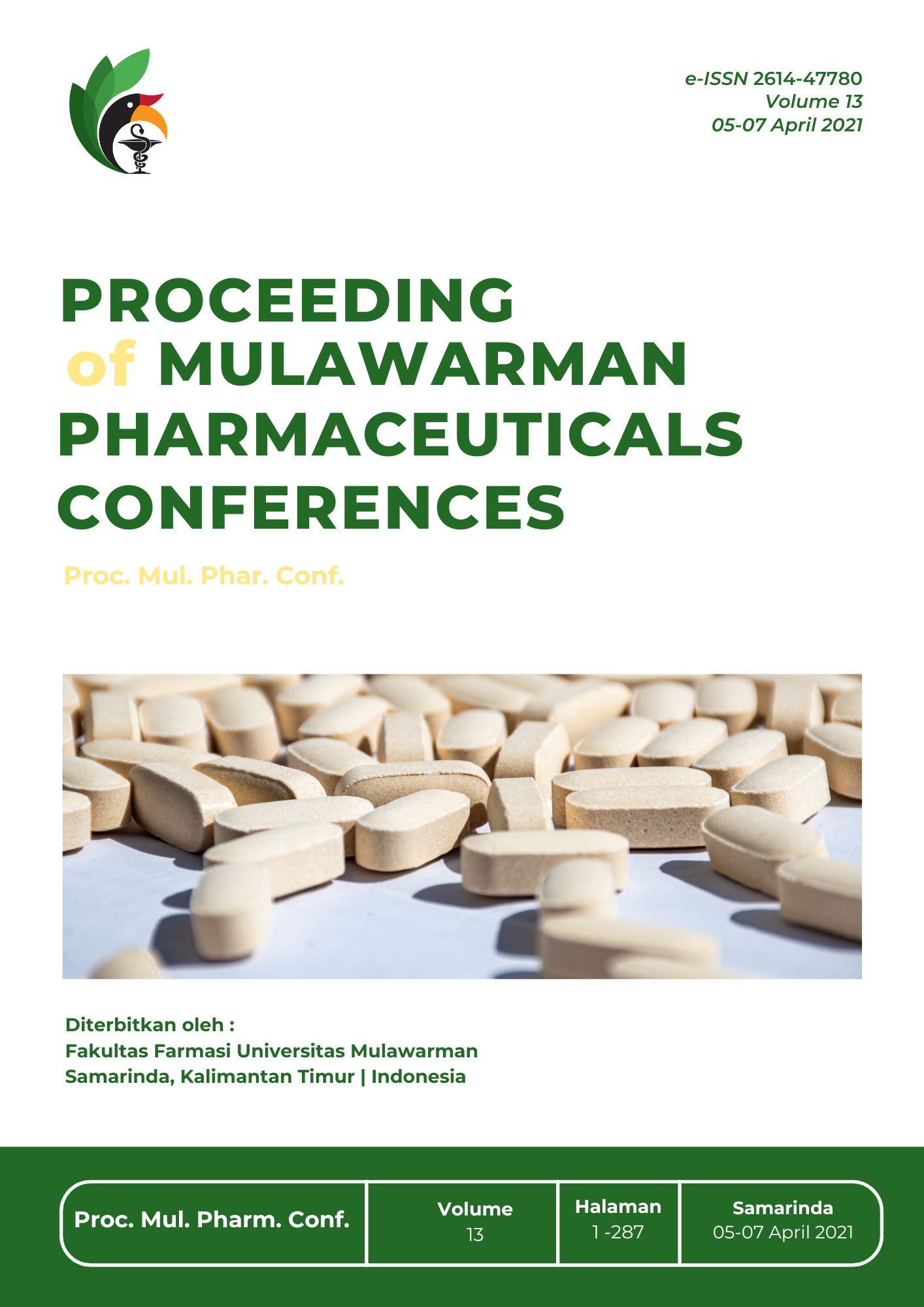Molecular Binding of Secondary Metabolite Compounds of Dayak Onion (Eleutherine bulbosa) As Dipeptidyl Peptidase IV (DPP-4) Inhibitors
DOI:
https://doi.org/10.30872/mpc.v13i.329Keywords:
Diabetes Milletus, Dpp-4, bawang dayak, penambatan molekuelerAbstract
Diabetes is a frightening disease that threatens people's lives, because almost every 10 seconds in the world, people die from complications of this disease. A new DM treatment approach in the creatinase system that inhibits dipeptidyl peptidase IV (Dpp-4) has been developed, and has been shown to effectively increase insulin secretion, maintain pancreatic -integration, and slow gastric emptying. antidiabetic, namely inhibition of the -glucosidase enzyme in one of its compounds and has not been found to inhibit the Dpp-4 enzyme. This study aims to determine the potential of the compounds in Dayak onions as inhibitors of the Dpp-4 enzyme. The method used is molecular anchoring or in silico because the research time is short and the cost is cheaper than in vitro or in vivo. The software used is autodock which is a device that can attach ligand molecules to receptor macromolecules. Then visualized using discovery studio 2020 and other devices to support tethering such as chemdraw and chimera 1.4. vidagliptin as an antidiabetic which has activity against inhibiting Dpp-4 inhibitors was used as a standard. The grid is placed on natural ligands with a box size of 52? x 28? x 26? and a center of 40,926? x 50,522? x 35,031? with a spacing of 0.375?. Based on the docking that has been done, the secondary metabolite compounds in Dayak onions have a low bond energy value, with the lowest value being -8.46 kcal/mol and the highest -5.54 with different values of inhibition constant and bond form. Eleuthoside C has the lowest bond energy of -8.46 and has the most similar interaction with natural ligands. The bond that occurs is the type of hydrogen bonding at the residues of Phe357, Arg125, Arg358, Tyr666, Tyr662, and Glu205. With this, Dayak onions have antidiabetic activity but further docking still needs to be done to see other compounds in Dayak onions as Dpp-4 inhibitors.
References
[1] Ahmad, I., Arifuddin, M. and Rijai, L. (2016) ?The Effect of Extraction Methods of Bawang Dayak (Eleutherine Palmifolia L. MERR) Against TLC Profiles and Sunscreen Activities?, Article in International Journal of PharmTech Research, 9(9), pp. 428?436. Available at: https://www.researchgate.net/publication/309792464.
[2] Chaudhury, A. et al. (2017) ?Clinical Review of Antidiabetic Drugs: Implications for Type 2 Diabetes Mellitus Management?, Frontiers in Endocrinology, 8(January). doi: 10.3389/fendo.2017.00006.
[3] Galingging, R. . (2009) ?Bawang Dayak (Eleutherine palmifolia) sebagai tanaman obat multifungsi?, Warta Penelitian dan Pengembangan Tanaman Industri, 15(3), pp. 2?4.
[4] Lahrita, L., Kato, E. and Kawabata, J. (2015) ?Uncovering potential of Indonesian medicinal plants on glucose uptake enhancement and lipid suppression in 3T3-L1 adipocytes?, Journal of Ethnopharmacology. Elsevier, 168, pp. 229?236. doi: 10.1016/j.jep.2015.03.082.
[5] Setiawan, F. F. and Istyastono, E. P. (2015) ?Uji in Silico Senyawa 2,6-Dihidroksiantraquinon Sebagai Ligan Pada Reseptor Estrogen Alfa?, Jurnal Farmasi Sains dan Komunitas, 12(2), pp. 77?80.
Downloads
Published
Issue
Section
License
Copyright (c) 2021 Nur Ainah, Mukti Priastomo, Angga Cipta Narsa (Author)

This work is licensed under a Creative Commons Attribution-NonCommercial 4.0 International License.


